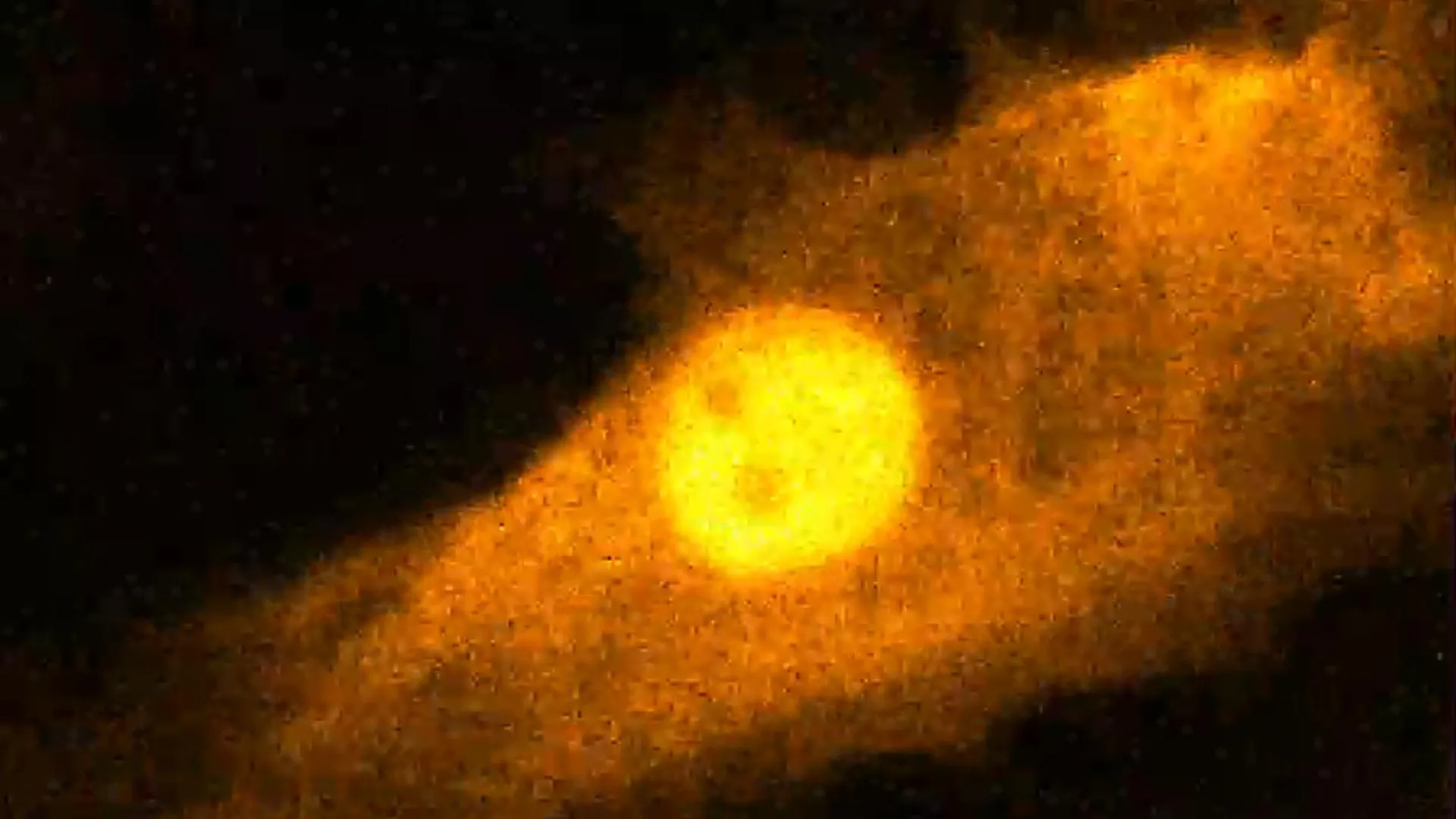Stopping time in cells exposes life’s fastest secrets
Researchers from The University of Osaka develop time-deterministic cryo-optical microscopy, which freezes cells with millisecond precision, enabling accurate, high-resolution visualization of transient moments during dynamic cellular processes
- Date:
- August 24, 2025
- Source:
- The University of Osaka
- Summary:
- Scientists have developed a groundbreaking cryo-optical microscopy technique that freezes living cells mid-action, capturing ultra-detailed snapshots of fast biological processes. By rapidly immobilizing cells at precise moments, researchers can overcome the limitations of traditional live-cell imaging and gain sharper insights into fleeting events like calcium ion waves in heart cells.
- Share:

Optical microscopy is a key technique for understanding dynamic biological processes in cells, but observing these high-speed cellular dynamics accurately, at high spatial resolution, has long been a formidable task.
Now, in an article published in Light: Science & Applications, researchers from The University of Osaka, together with collaborating institutions, have unveiled a cryo-optical microscopy technique that take a high-resolution, quantitatively accurate snapshot at a precisely selected timepoint in dynamic cellular activity. Capturing fast dynamic cellular events with spatial detail and quantifiability has been a major challenge owing to a fundamental trade-off between temporal resolution and the 'photon budget', that is, how much light can be collected for the image. With limited photons and only dim, noisy images, important features in both space and time become lost in the noise.
"Instead of chasing speed in imaging, we decided to freeze the entire scene," explains one of the lead authors Kosuke Tsuji. "We developed a special sample-freezing chamber to combine the advantages of live-cell and cryo-fixation microscopy. By rapidly freezing live cells under the optical microscope, we could observe a frozen snapshot of the cellular dynamics at high resolutions."
For instance, the team froze calcium ion wave propagation in live heart-muscle cells. The intricately detailed frozen wave was then observed in three dimensions using a super-resolution technique that cannot normally observe fast cellular dynamics due to its slow imaging acquisition speed.
"This research began with a bold shift in perspective: to arrest dynamic cellular processes during optical imaging rather than struggle to track them in motion. We believe this will serve as a powerful foundational technique, offering new insights across life-science and medical research," says senior author Katsumasa Fujita. One of the lead authors, Masahito Yamanaka, adds "Our technique preserves both spatial and temporal features of live cells with instantaneous freezing, making it possible to observe their states in detail. While cells are immobilized, we can take the opportunity to perform highly accurate quantitative measurements with a variety of optical microscopy tools."
The researchers also demonstrated how this technique improves quantification accuracy. By freezing cells labeled with a fluorescent calcium ion probe, they were able to use exposure times 1000 times longer than practical in live-cell imaging, substantially increasing the measurement accuracy.
To capture transient biological events at precisely defined moments, the researcher integrated an electrically triggered cryogen injection system. With UV light stimulation to induce calcium ion waves, this system enabled freezing of the calcium ion waves at a specific time point after the initiation of the event, with 10 ms precision. This allowed the team to arrest transient biological processes with unprecedented temporal accuracy.
Finally, the team tuned their attention to combining different imaging techniques, which are often difficult to align in time. By the near-instantaneous freezing of samples, multiple imaging modalities can now be applied sequentially without worrying about temporal mismatch. In their study, the team combined spontaneous Raman microscopy and super-resolution fluorescence microscopy on the same cryofixed cells. This allowed them to view intricate cellular information from a number of perspectives at the exact same point in time.
This innovation opens new avenues for observing fast, transient cellular events, providing researchers with a powerful tool to explore the mechanisms underlying dynamic biological processes.
Story Source:
Materials provided by The University of Osaka. Note: Content may be edited for style and length.
Journal Reference:
- Kosuke Tsuji, Masahito Yamanaka, Yasuaki Kumamoto, Shoko Tamura, Wakana Miyamura, Toshiki Kubo, Kenta Mizushima, Kakeru Kono, Hanae Hirano, Momoko Shiozaki, Xiaowei Zhao, Heqi Xi, Kazunori Sugiura, Shun-ichi Fukushima, Takumi Kunimoto, Yoshino Tanabe, Kentaro Nishida, Kentaro Mochizuki, Yoshinori Harada, Nicholas I. Smith, Rainer Heintzmann, Zhiheng Yu, Meng C. Wang, Takeharu Nagai, Hideo Tanaka, Katsumasa Fujita. Time-deterministic cryo-optical microscopy. Light: Science, 2025; 14 (1) DOI: 10.1038/s41377-025-01941-8
Cite This Page: